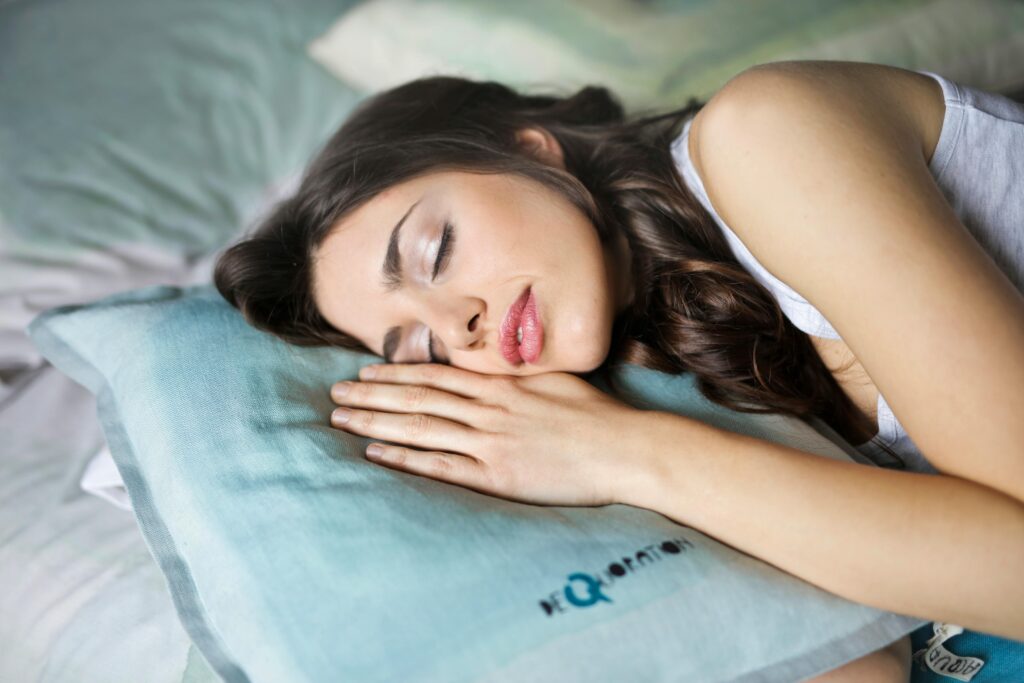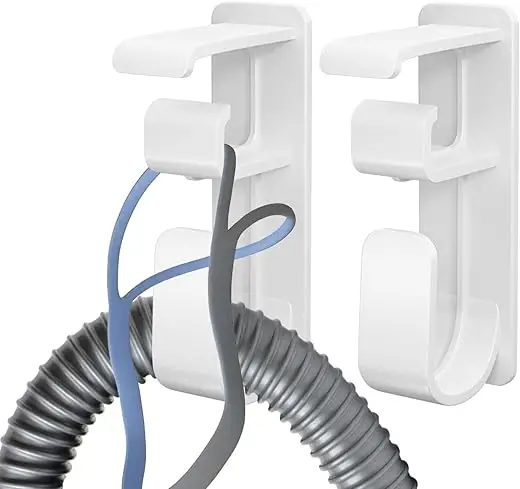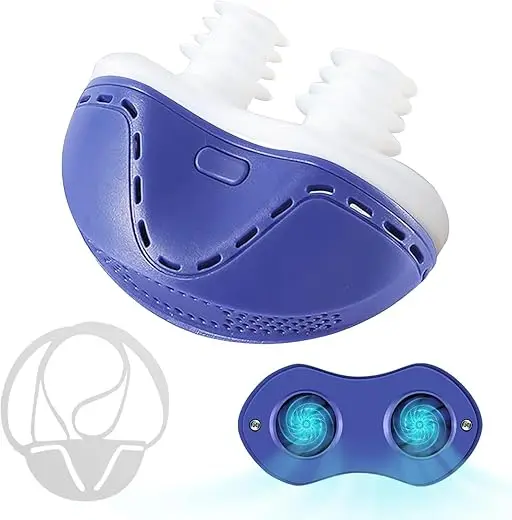Every night, millions of people face the challenges of sleep apnea, a condition disrupting both sleep and daily life. To combat this, Continuous Positive Airway Pressure (CPAP) therapy has emerged as a leading solution. Understanding the essentials of CPAP can empower beginners to take control of their sleep health.
CPAP functions as a lifeline for those struggling with obstructed breathing during sleep, using steady air pressure to keep airways open. The variety of CPAP machines, from Standard to BiPAP, cater to different needs, but navigating through the features and benefits can be daunting without proper guidance.
This article delves into the world of CPAP, covering everything from its types and health benefits to overcoming common challenges and financial considerations. Whether you’re new to CPAP or looking to optimize your therapy, this guide will provide you with the foundational knowledge you need.
What is CPAP and How Does It Work?
A CPAP machine is a crucial tool to help those with sleep apnea. This device helps keep your airways open while you sleep by providing a steady stream of air. Sleep apnea can cause breathing to stop and start during sleep due to blocked airways. The CPAP machine combats this by maintaining continuous air pressure. This ensures smooth breathing, improving sleep quality. Such therapy prevents interruptions caused by obstructions like the tongue or tonsils. Plus, many CPAP devices are portable, offering flexibility without needing a sleep lab test.
Definition of CPAP
CPAP stands for Continuous Positive Airway Pressure. It is a type of machine designed to aid in breathing during sleep by keeping airways open. The main function is to deliver gentle air pressure through a mask. This mask is worn over the nose, mouth, or both, to ensure the airways remain unblocked. This method is especially useful for those with obstructive sleep apnea. Additionally, CPAP can support preterm infants who have underdeveloped lungs. This is because it provides a consistent airflow to help their breathing.
Mechanism of CPAP Machines
The CPAP machine operates using a motor to deliver air through a tube into a mask. This system ensures that your airway stays open throughout the night. The pressure of the air remains constant and steady, which helps prevent blockages. CPAP masks come in different forms to suit your needs, covering just the nose or both the nose and mouth. Some models even include features like heated humidifiers and adjustable pressure settings. These features enhance comfort, making the therapy more pleasant for long-term use. Moreover, an air filter purifies the air before it reaches your airway.
Components of a CPAP System
A CPAP system needs several key parts to function well. The main element is the mask, which is crucial for maintaining a seal for air delivery. This mask can either cover just the nose or both the nose and mouth. To keep the mask steady, straps are used, ensuring it remains in place while you sleep. The setup also includes a tube that links the mask to the motor. This tube facilitates the smooth flow of air into your airway. Inside the CPAP machine, a motor propels the air, aiding in keeping the airway open during sleep. Lastly, an air filter is present to cleanse the air, ensuring it is safe and clean before entering the mask.
Types of CPAP Machines
CPAP machines are vital for managing sleep apnea. They help maintain open airways during sleep using an air filter, mask, and other components. There are various types of CPAP machines designed to meet different needs. Each type has specific features that cater to user preferences and medical requirements. Whether you need a standard CPAP, an APAP, or a BiPAP machine, selecting the right one is critical. Understanding these options ensures better sleep quality and overall health.
Standard CPAP Machines
Standard CPAP machines are the most common type used for sleep apnea therapy. They include a mask that covers the nose or both the nose and mouth, a tubing system, and a motor. This motor delivers a steady stream of air pressure to keep the airway open. Many standard models offer features like heated humidifiers, which add moisture to the air and improve comfort. Some even have connectivity for smartphone apps, allowing users to monitor their therapy progress. CPAP therapy with these machines provides continuous airflow, preventing airway obstruction during sleep. It is a straightforward solution for those with obstructive sleep apnea.
APAP (Automatic Positive Airway Pressure)
APAP machines offer a more tailored approach compared to standard CPAP devices. These machines automatically adjust the air pressure based on the user’s breathing patterns throughout the night. This adaptability makes them ideal for those with fluctuating breathing, due to changes in sleep position or weight. Unlike CPAP machines, which provide a constant pressure, APAP machines vary the pressure to meet individual needs. This ensures optimal treatment without needing manual adjustments. Consequently, APAP machines are a popular choice for managing obstructive sleep apnea in patients with varying nightly requirements.
BiPAP (Bilevel Positive Airway Pressure)
BiPAP machines provide a distinct form of non-invasive ventilation therapy. They deliver two separate pressure levels—higher pressure during inhalation and lower during exhalation. This feature distinguishes them from CPAP machines, which deliver air at a single, steady pressure. BiPAP therapy is effective for those requiring different pressure settings, which can include sleep apnea patients. One popular model, the ResMed AirCurve™ 10 Vauto, illustrates the benefits of these machines. Its design caters to those who need more advanced airflow management. BiPAP devices offer a specialized solution for people needing varied pressure support while breathing.
Benefits of CPAP Therapy
CPAP therapy is a proven method for treating obstructive sleep apnea. It involves using a CPAP machine that delivers continuous positive airway pressure. This pressure keeps the upper airway open, preventing it from collapsing during sleep. Using CPAP therapy can lead to better lung function by maintaining proper ventilation and improving the balance of oxygen and carbon dioxide in the body. Over time, regular use of a CPAP machine can also help lower blood pressure and reduce the risk of cardiovascular issues. Patients who use CPAP therapy often notice a decrease in symptoms like snoring and tiredness during the day. Additionally, it can improve mood and alertness, contributing to a better quality of life. Long-term adherence to CPAP therapy is associated with a lower risk of developing heart diseases and other health problems linked to obstructive sleep apnea.
Improved Sleep Quality
CPAP therapy can greatly enhance the sleep quality of those suffering from obstructive sleep apnea. By using a CPAP machine, people can experience less snoring, which results in more restful sleep for both the user and their partner. The machine provides a steady flow of air, keeping the airways open and allowing uninterrupted sleep. When sleep is less disturbed, people often enjoy deeper and more restorative sleep phases. This leads to less daytime sleepiness because the CPAP helps maintain a stable sleep pattern. Better sleep at night means better alertness and focus during the day, improving overall well-being.
Reduction of Sleep Apnea Symptoms
Using CPAP therapy helps reduce the symptoms of sleep apnea by keeping the airway open at all times during sleep. The constant airflow provided by the CPAP machine supports proper breathing, cutting down on interruptions in sleep patterns. With this steady supply of air, fewer breathing pauses occur during the night, resulting in less snoring and improved oxygenation. People often feel more refreshed and alert during the day because of this consistent air pressure. CPAP machines are an effective treatment for sleep apnea, ensuring that breathing remains consistent throughout the night, without disruptions.
Long-term Health Benefits
Consistent use of CPAP machines can have lasting health benefits. One significant advantage is the reduction of high blood pressure, which helps prevent other health issues down the line. Over time, CPAP therapy can also decrease the risk of stroke, a serious health concern connected to untreated sleep apnea. Besides physical health, CPAP therapy can also support mental well-being by boosting memory and cognitive function. This leads to better mental health outcomes in the long run. Proper use of CPAP machines aids in managing blood pressure more effectively, cutting down the risk of cardiovascular diseases and promoting a healthier life overall.
Common Challenges and Solutions
CPAP therapy is a highly effective treatment for sleep apnea, yet many users face challenges when beginning treatment. Common problems include mask leaks, difficulty falling asleep, and a dry mouth or stuffy nose. Proper patient selection and careful mask fitting are key to reducing these issues. It’s also crucial for users to be closely monitored, especially in the early stages of their therapy. Contraindications such as hemodynamic instability or prior facial surgeries can hinder effective CPAP use. Despite these challenges, continuous use of a CPAP machine offers significant health benefits both in the short and long term. A tailored approach and support from healthcare providers can help overcome these obstacles.
Mask Discomfort and Fit Issues
Many CPAP users struggle with mask-related discomfort. Feelings of claustrophobia or embarrassment can make it hard to adjust to wearing a mask at night. A proper mask fit is crucial because an incorrect size can lead to pressure sores and skin irritation. Leaky CPAP masks are a common issue, affecting the therapy’s effectiveness. Various styles of CPAP masks, such as nasal pillows or full face masks, are available. Switching mask types may help if the current one is uncomfortable or leaks air. Regular cleaning and maintenance of CPAP masks can also prevent skin irritation, ensuring the mask remains functional and comfortable over time.
Pressure Settings Adjustment
CPAP machines deliver continuous air pressure, which is often fixed by a sleep specialist. However, some users may benefit from machines with adjustable settings. Autotitrating CPAP machines, also known as APAP, self-adjust the pressure based on the user’s breathing patterns. This ensures the ideal pressure is applied to minimize apneic events. For those needing different pressures for inhalation and exhalation, BiPAP machines may offer a more comfortable alternative. Choosing the right pressure setting is crucial for effective therapy. Initially, patients might be monitored in a sleep lab to establish the ideal pressure through manual titration, making sure it aligns with their specific needs.
Dry Mouth and Nose Irritation
CPAP therapy can sometimes cause side effects like dry mouth and nasal irritation. Consistent airflow from the machine may lead to nasal congestion or a dry nose, which can affect comfort. Some mask types can irritate the skin, worsening these issues. This dryness can even result in nosebleeds for some users. Addressing these problems might involve adjustments such as improving mask fitting or using a heated humidifier. A sleep specialist may recommend alternative PAP devices or humidification to alleviate these symptoms. By addressing these concerns early, users can maintain their therapeutic benefits while improving comfort during sleep.
Financial Aspects of CPAP Therapy
Understanding the financial aspects of CPAP therapy is crucial for individuals with sleep apnea. CPAP machines, or Continuous Positive Airway Pressure machines, are a significant investment. Their costs can vary based on the brand, model, and included features. While the initial expense might seem high, considering insurance coverage, discounts, and understanding alternative treatments can help mitigate costs.
Insurance and Medicare Coverage
Insurance and Medicare can play a pivotal role in managing the costs of CPAP therapy. Medicare often offers coverage for a 12-week trial period if a patient is diagnosed with obstructive sleep apnea. Continued coverage might depend on documented improvements and other conditions. Patients with Medicare might also need to pay a deductible and 20% of the costs, whether renting or buying the device. It’s crucial to verify with your insurance provider to understand what portion of the cost will be covered. The involvement of insurance significantly eases the financial burden, making it easier for patients to afford this essential medical device.
Understanding CPAP Costs
The cost of a CPAP machine averages around $800. Factors such as brand, model, and features can affect the price, making some machines more costly. BiPAP machines, which offer a different kind of air pressure, tend to be pricier, often averaging about $1,350. Without insurance, prices can range between $500 and $3,000. For some, these costs might seem overwhelming. Nonetheless, discounted options exist, with CPAP machines sometimes starting as low as $199 during clearance events. Insurance can also help lower these costs, with Medicare allowing patients to own a machine after 13 months of rental payments, reducing the long-term expense burden.
Cost-Effective Alternatives
For individuals seeking cost-effective alternatives to CPAP therapy, several options are available. One such method is oral appliance therapy. This involves using a custom device from a dentist to widen the airway, which may be suitable for mild to moderate obstructive sleep apnea. Another alternative is the hypoglossal nerve stimulator, an implant that requires surgery. This device prevents airway collapse by controlling the position of the tongue. Lastly, modifying sleep positions can be a simpler, non-invasive alternative. Although CPAP therapy is highly effective, not all patients find it comfortable or suitable. Consulting a healthcare provider allows patients to explore these alternatives, ensuring they find a solution that addresses their specific needs and provides relief from sleep apnea symptoms.
Maintenance and Care of CPAP Equipment
Maintaining your CPAP machine is crucial for effective treatment of sleep apnea. The machine consists of several components: a mask, motor, air filter, and tubing, which all require care. Cleaning these parts regularly ensures they function well and comfortably, providing the continuous positive airway pressure needed to keep airways open. Ignoring maintenance can lead to performance issues, discomfort, and reduced treatment effectiveness. Additionally, regular checks by a healthcare provider or supplier can catch any problems, like excessive noise. This proactive approach ensures your CPAP therapy remains beneficial and your equipment lasts longer.
Routine Cleaning Procedures
Routine cleaning of your CPAP machine is vital for its longevity and your health. Detachable parts should be washed with a vinegar and water solution, especially if you notice any dirt. Regularly cleaning reusable filters with water, as directed in the manufacturer’s guide, prevents infections. Avoid submerging parts with electrical cords; instead, use a damp towel. Proper cleaning techniques prevent germs from settling on your equipment. Following these guidelines can lead to a more hygienic and effective CPAP therapy experience, ensuring your machine delivers fresh, filtered air.
Importance of Regular Maintenance
Regular maintenance of CPAP equipment is essential for smooth operation. By consistently cleaning the mask and hose, you prevent contaminants from building up, keeping air filtered and safe. A properly maintained CPAP machine operates quietly and efficiently, enhancing sleep quality. Regular upkeep, such as checking for noise, ensures that the device is safe and delivers effective therapy. Overall, proper maintenance not only prolongs equipment life but also contributes to the success of your sleep apnea treatment, helping you achieve uninterrupted restful nights.
Risks of Unverified Cleaning Devices
While some automatic machines claim to clean CPAP devices, the FDA has not approved these as necessary. These devices might not eliminate germs like bacteria and viruses, offering a false sense of security. Instead, cleaning with mild soap and water or diluted vinegar is both simple and effective. Using unverified devices could lead to contamination, putting your health at risk. It’s always best to consult healthcare providers for trusted cleaning techniques, ensuring your CPAP remains safe and reliable for your sleep therapy.
Alternatives to CPAP Therapy
For those seeking alternatives to CPAP therapy, several options exist. These methods cater to individuals who may find CPAP machines uncomfortable or unsuitable. Surgical and dental options offer different ways to manage sleep apnea. It’s crucial to discuss these alternatives with a healthcare provider to find the most effective approach. Each alternative has its benefits and should be chosen based on an individual’s unique condition and needs.
Mandibular Advancement Devices
Mandibular advancement devices (MADs) serve as an effective alternative or complement to CPAP therapy. These oral appliances are crafted by specialists to fit over the teeth. By advancing the lower jaw, MADs help open the airway during sleep. They can also reduce oral air leaks when used with CPAP therapy. This makes them a versatile option for those dealing with nasal congestion or obstruction issues.
Lifestyle Changes and Weight Management
Lifestyle changes play a vital role in managing sleep apnea. Though specific details aren’t provided here, weight management is known to improve symptoms of obstructive sleep apnea. Maintaining a healthy weight can reduce the severity of sleep apnea by lowering the pressure on the airways. Simple changes like eating a balanced diet and exercising regularly can help. These efforts, combined with medical treatments, can improve sleep quality.
Other Sleep Apnea Treatments
Oral appliance therapy offers another way to treat sleep apnea. The custom-made devices adjust the jaw position to open the airway, particularly effective for mild to moderate obstructive sleep apnea cases. Positional therapy encourages sleeping on the side or stomach to prevent apnea episodes common in back sleepers. Hypoglossal nerve stimulation provides a surgical option. It involves a device that delivers electrical stimuli to airway nerves, keeping the airway open. Lifestyle adjustments, such as reducing alcohol intake and quitting smoking, remain critical in managing mild obstructive sleep apnea. These combined approaches provide a holistic plan for individuals seeking alternate treatments.
Getting Started with CPAP Therapy
Getting started with CPAP therapy can be a game-changer for those with obstructive sleep apnea. A CPAP machine delivers Continuous Positive Airway Pressure to keep your airway open during sleep. It includes a motor, mask, straps, and often a heated humidifier for added comfort.
Common Components:
- Nasal Mask
- Full Face Mask
- Nasal Pillows
Using the device during all sleep, including naps and while traveling, is crucial for effectiveness. However, many users experience challenges such as mask leaks, dry mouth, and trouble falling asleep. These issues require adjustments to the mask fit and pressure settings.
Common Issues & Solutions:
- Mask Leaks: Check the fit, adjust straps
- Dry Mouth: Use a heated humidifier
- Difficulty Sleeping: Begin with short sessions, gradually increase
For those who struggle with constant air pressure, alternatives like Bi-level PAP and Auto CPAP machines adjust based on breathing patterns. Despite the benefits, a high dropout rate exists within the first year. Compliance is key for improved sleep quality and reduced blood pressure.
Stick with it, and consult your medical device provider to address any concerns. Proper use can make a significant difference in your overall health.



